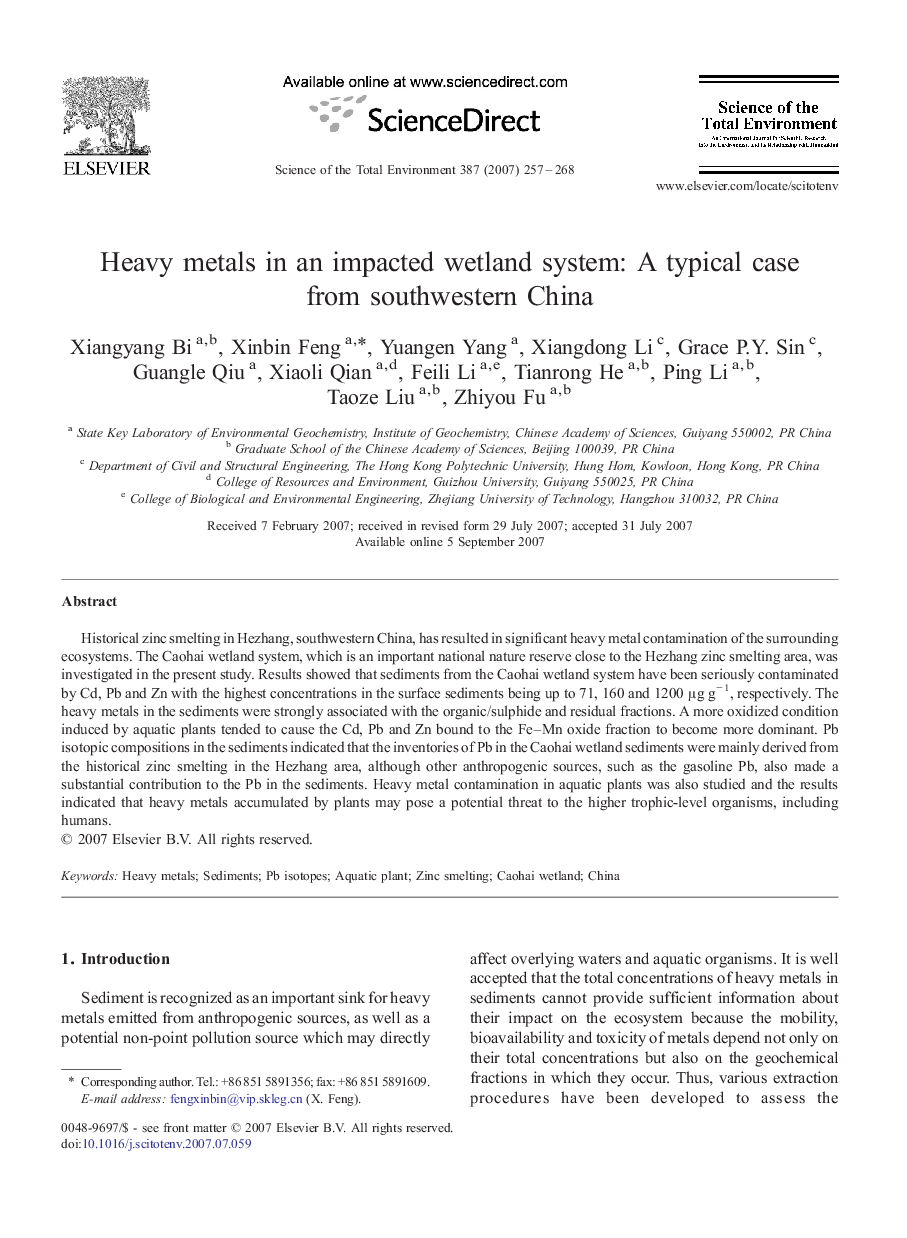| Article ID | Journal | Published Year | Pages | File Type |
|---|---|---|---|---|
| 4432770 | Science of The Total Environment | 2007 | 12 Pages |
Historical zinc smelting in Hezhang, southwestern China, has resulted in significant heavy metal contamination of the surrounding ecosystems. The Caohai wetland system, which is an important national nature reserve close to the Hezhang zinc smelting area, was investigated in the present study. Results showed that sediments from the Caohai wetland system have been seriously contaminated by Cd, Pb and Zn with the highest concentrations in the surface sediments being up to 71, 160 and 1200 μg g− 1, respectively. The heavy metals in the sediments were strongly associated with the organic/sulphide and residual fractions. A more oxidized condition induced by aquatic plants tended to cause the Cd, Pb and Zn bound to the Fe–Mn oxide fraction to become more dominant. Pb isotopic compositions in the sediments indicated that the inventories of Pb in the Caohai wetland sediments were mainly derived from the historical zinc smelting in the Hezhang area, although other anthropogenic sources, such as the gasoline Pb, also made a substantial contribution to the Pb in the sediments. Heavy metal contamination in aquatic plants was also studied and the results indicated that heavy metals accumulated by plants may pose a potential threat to the higher trophic-level organisms, including humans.
